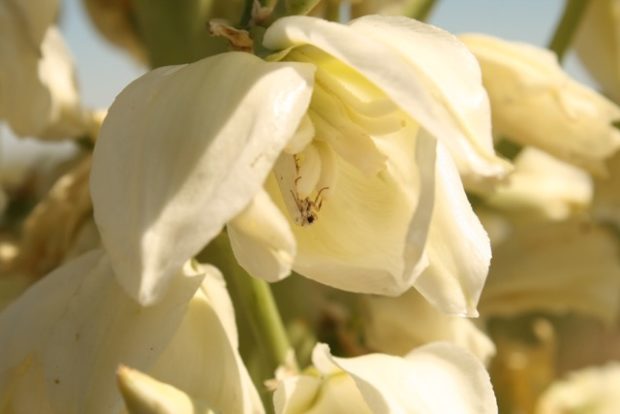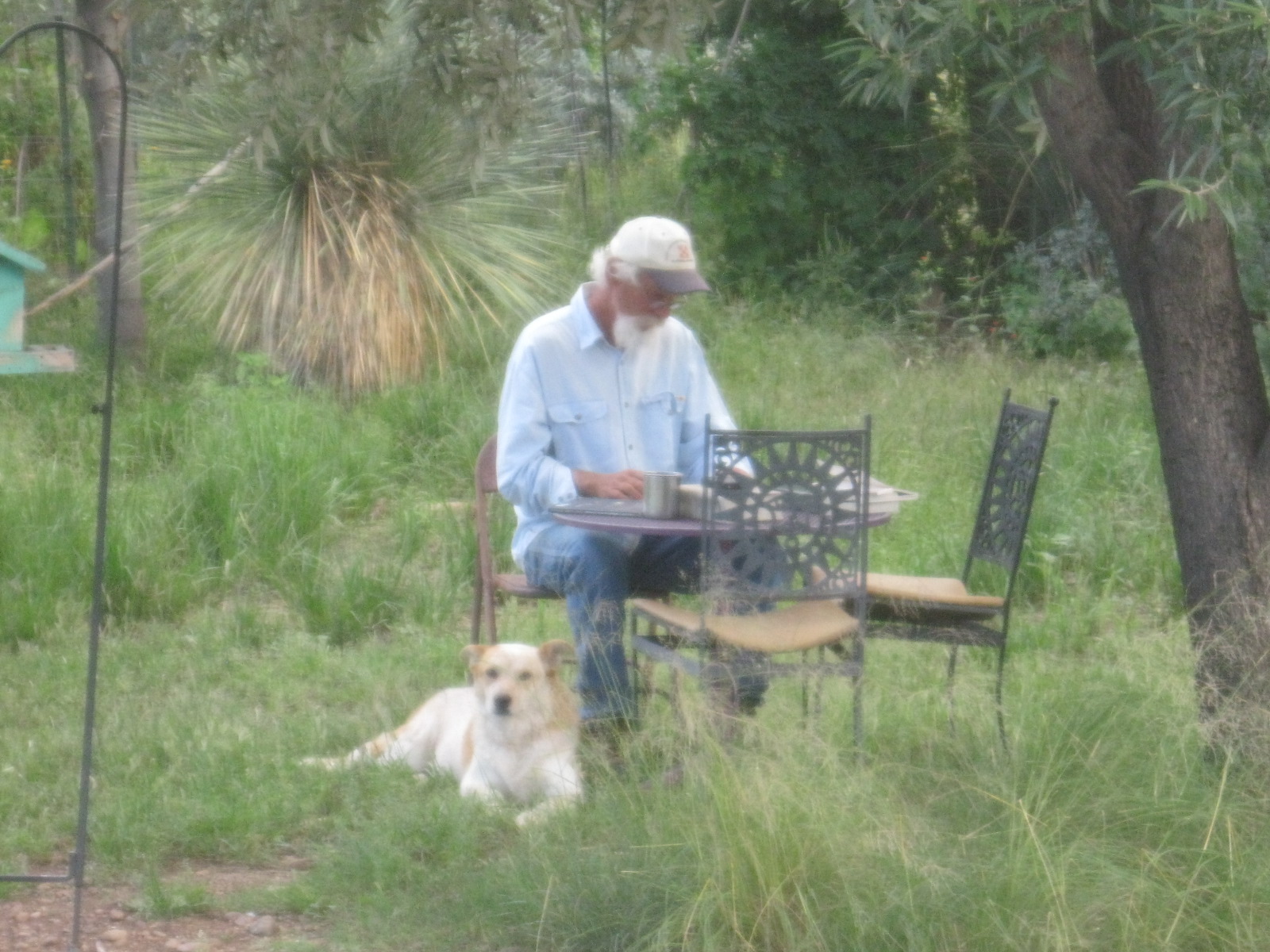The miller moths that showed up at our little homestead are the adult of the army cutworm (Euxoa auxiliaris) and they migrate from lower areas and head to upper elevations. I’ve read that they are common invaders of mountain cabins and summer homes, but the most interesting thing to me about miller moths is how they become part of the food chain in the upper elevations. In grizzly country the bears (black bears too) chow down on the hundreds of thousands of moths that migrate and hide in the hills. Around us, I’m guessing black bears and smaller omnivores like skunks, ringtails or coatimundi find them tasty as well. Now you know.
I’ve told the story of the yucca moths and the soaptree yuccas many times. I love to tell it when I give talks and I’m not making this up, many years ago on a special International Women’s Day on KXCI, my wife, yes, Ms. Mesquitey, told the yucca moth story on Growing Native. We both think it is one of the most beautiful and magical things that happen around us in the natural world. Yes, it’s part of an extremely long and always lengthening list of wonderful things, but what a great example of how we can’t possibly ever replace our native plants or pollinators…and why would we try. Go native!

The photos are mine and taken here at home. One photo of looking out across the land and then some yucca flower photos with a surprise; I was pulling back the flower petals to reveal the flower parts and lo and behold, there was Ms. Tageticula elatella! She’s on a stamen in both photos and was probably just hanging out and waiting for evening. If my hearing were better I probably could have heard her asking me to please lower the petals so she could get some sleep, as she had a long night ahead.


Seeing persimmons in an abandoned orchard at the Chiricahua National Monument pulled up a childhood memory and later I found myself pulling books off...

Petey jabbers about cool plants and critters found in the grassland near his home, but finally hones in on a climbing milkweed vine called...

Lotus greenei has the common names of deer vetch, deer clover or, red and yellow pea. I like the last one best as it...